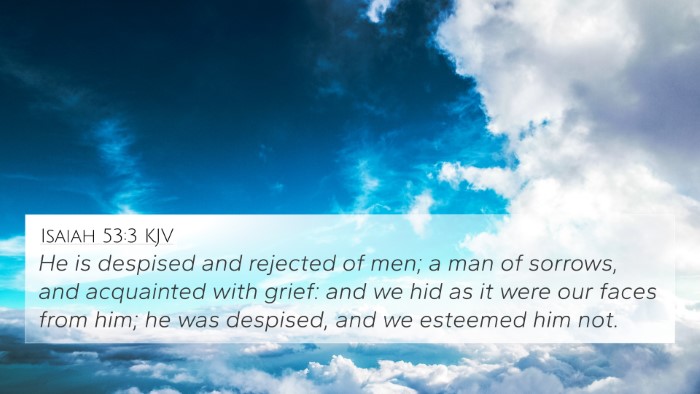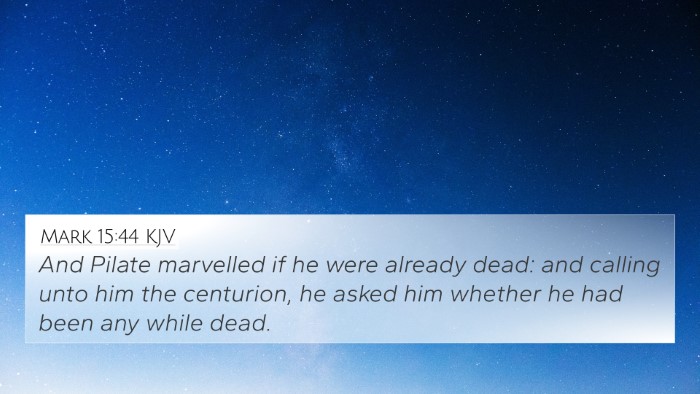Understanding Luke 8:53
Luke 8:53 states: "And they laughed him to scorn, knowing that she was dead." This verse occurs in the narrative of Jesus raising the daughter of Jairus. As part of this account, it highlights the skepticism that often surrounds the miraculous.
Summary of Insights from Public Domain Commentaries
Matthew Henry's Commentary
Matthew Henry reflects on the doubt and disbelief encountered in this passage. The laughter signifies a lack of faith, as the crowd was convinced of the finality of death. They were focused on the physical state of the girl rather than the possibility of divine intervention. This illustrates how human reasoning often limits understanding of God’s power.
Albert Barnes' Notes
Albert Barnes emphasizes the contrast between human perception and divine capability. The people laughed because they could not reconcile their understanding of death with the idea of resurrection. This verse serves as a powerful reminder of the limitations of human belief when faced with divine authority.
Adam Clarke's Commentary
Adam Clarke points out that this laughter not only reflects disbelief but also serves as a foreshadowing of Jesus’s authority over life and death. The skepticism displayed by the crowd provides a backdrop for the miraculous event that follows. Clarke highlights that faith in God's power is essential for witnessing miracles.
Cross-References Related to Luke 8:53
- Matthew 9:24: Similar situation of disbelief when Jesus arrives at a ruler’s house and states the girl is not dead, but sleeping.
- Mark 5:40: Reiterates the mockery of those who did not believe in Jesus’s power to bring the girl back to life.
- John 11:11-15: Jesus refers to Lazarus's death as sleep, showing a parallel in how death is perceived in relation to faith.
- Romans 4:20-21: Highlights Abraham’s unwavering faith, contrasting the crowd's lack of belief in Jesus’s ability.
- 1 Corinthians 1:18: Discusses how the message of the cross is foolishness to those who are perishing, similar to the crowd's scorn.
- Hebrews 11:1: Defines faith for what is hoped for, something the crowd lacks in this scenario.
- Luke 11:14: Depicts the response of the people in witnessing miracles, often met with skepticism instead of faith.
Thematic Connections and Analysis
Luke 8:53 illustrates a recurring theme in scripture: the tension between faith and skepticism. Throughout the Gospels, we observe numerous instances where Jesus performs miracles despite human doubt. The crowd's scorn can be seen as emblematic of broader societal disbelief, challenging believers to maintain faith in divine possibilities.
Comparative Bible Verse Analysis
When undertaking a comparative analysis of this verse with others, it's important to note the common motifs of belief versus disbelief. Luke 8:53 stands out not just for the immediate context of Jesus’s miraculous works, but also as a part of a larger dialogue within the Scriptures regarding the nature of faith, the power of God, and the human condition.
Cross-Referencing Biblical Texts
The act of cross-referencing biblical texts serves as a valuable tool for deeper understanding. Luke 8:53 encourages readers to analyze how varying accounts of miracles provide insight into the character of Jesus and the nature of faith. By correlating this verse with others like Matthew 9:24 and John 11:11-15, one can gain a broader comprehension of how skepticism is addressed in the face of divine authority.
Conclusion
In conclusion, Luke 8:53 serves a crucial role in illustrating the dichotomy of faith in the face of death. Through the lens of historical and contemporary commentary, the verse equips believers with a nuanced understanding of how to approach doubt and disbelief. Recognizing the connections between Bible verses enhances our interpretation and reveals the enduring relevance of God’s message throughout the Scriptures.
Tools for Further Study
- Bible Concordance: A helpful resource for finding specific verses and their thematic connections.
- Bible Cross-Reference Guide: Assists in linking similar passages, enriching study sessions.
- Bible Chain References: Following themes through various books of the Bible.
- Comprehensive Bible Cross-Reference Materials: Collects a wide array of resources for deeper scriptural interaction.










